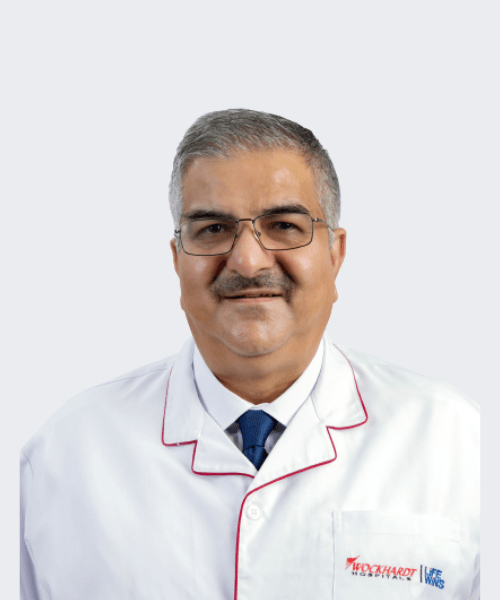Home » Medical Procedure » Minimal Invasive Spinal Surgery
Minimally Invasive
Spinal Surgery
What is Minimally
Invasive Spinal Surgery?
Minimally invasive spinal surgery is another name for minimally invasive spine surgery. In this procedure, surgeons use specialized equipment to access the spine through tiny incisions. A 5- to 6-inch incision is made during a standard open surgery, after which the muscles are pulled to one side to reveal the spine. By squeezing the muscles to one side, the surgeon can –
- Have access to the spine to remove unhealthy and injured intervertebral disks or bones.
- Identify the locations for bone graft materials, cages, or screws required to support the spinal bones and encourage recovery.
Minimally invasive spine surgery was introduced to address spine issues with less harm to the muscles and other healthy spine structures. Additionally, it is beneficial for the surgeon only to see the affected area of the spine. Some more benefits of MISS include –
- Fewer, smaller cuts
- Reduced bleeding
- Fewer hospital stays or, in certain situations, none at all (outpatient surgery).

Renowned Minimal Invasive Spinal Surgeons
at Wockhardt Hospitals
- Mumbai Central
- Mira Road
- Nagpur
- Rajkot
Signs and Symptoms of
Minimally Invasive Spinal Treatment
Below are some of the common signs and symptoms that you need minimal invasive spinal treatment –
- Slipped disk that is not getting better
- Your spinal cord is being pressed by bone spurs in your spine (which are frequently brought on by arthritis)
- Numbness or weakness in the legs and arms
- Spinal infection or high fever with back pain
- Tumour on the spinal cord
- Broken or dislocated bone in the spine
- A weakness-causing degenerative spinal ailment called stenosis (narrowing of the protective bone canal around the spinal cord)
Causes of Minimally Invasive
Spinal Surgery Procedure
Damage to the spinal column’s vertebrae, ligaments, discs, or spinal cord can cause spinal cord injuries. A quick, severe impact to your spine that compresses, dislocates, crushes or fractures, one or more of your vertebrae can result in a traumatic spinal cord injury. It may also result from gunshots or knife damage to the spinal cord.
Because of bleeding, oedema, inflammation, and fluid collection in and around your spinal cord, additional damage often occurs gradually over a period of days or weeks. Arthritis, inflammation, cancer, infections, or disk degeneration of the spine can all result in a non-traumatic spinal cord injury. Thus, these conditions might lead to minimally invasive spine surgery.
Types of Spine Surgery Can be
Performed Using a Minimal Invasive Spinal Surgery
Smaller incisions are used during minimally invasive spinal surgery to reduce trauma to the spine-supporting muscles and ligaments. The following are the types of surgery that can be done with the help of a minimally invasive approach –
Discectomy
In a minimally invasive discectomy, the herniated disc is removed using specialized retractors, a microscope, or an endoscope. Due to the ability to create smaller incisions, patients recover more quickly. After undergoing surgery under general anaesthesia, patients typically can be discharged from the hospital within an hour and return to their homes several hours later.
Foraminotomy
A foraminotomy is a procedure that enlarges the foramen, where the nerve roots exit the spinal canal in the back. It alleviates the signs and symptoms of nerve root compression, also called a “pinched nerve” or “radiculopathy.” The procedure requires no hospitalization.
Laminectomy
In a laminectomy, the spinal bone (lamina) is entirely or partially removed by the surgeon. This relieves pressure that may be placed on the spinal cord or the nerve roots due to an accident, a herniated disk, a stenosis (narrowing) of the canal, or tumours. A laminectomy is considered only after other medical treatments have failed.
Is it possible to be completely cured?
Common Tests Required Before
Minimal Invasive Spinal Surgery
Below are a few standard tests required before surgery –
X-Rays
Your doctor may prescribe an X-ray if you have back discomfort to look at several different components of your spine, such as –
- The separation of the discs
- Bone growths
- Facet enlargement
- (Hardening) Nerve Bundle Sclerosis
- Instability when the limbs are extended or flexed
MRI Scan
Usually, the entire process lasts between 30 and 60 minutes. Your doctor may check for these things during an MRI –
- Water loss in a disc
- Stenosis (spinal canal narrowing)
- Protruding intervertebral disc, or a herniated disc
- Hypertrophy (enlargement) of the facet joints
During an X-ray, a myelogram uses a specialized dye to highlight the spinal cord and nerve roots. You must receive the particular dye injection before a myelogram. A little needle will be inserted into the spinal canal by your doctor. A spinal tap is what is done in this situation.
Bone Scan
A radioactive substance, also known as a tracer, is used during a bone scan to locate hotspots in the bone structure. A hotspot is a region with high levels of radioactivity. These hotspots can help your doctor determine the source of your discomfort and the best course of action.
What Happens During
Minimally Invasive Spine Surgery?
Before a minimally invasive spinal surgery procedure, you would need to see the doctor for a pre-surgery consultation, where the doctor will advise you to –
- Quit smoking
- Exercise regularly
- Stop taking any herbal medicines or supplements
- Stop using any recreational drugs
- Cut off alcohol consumption
You will also be asked to stop taking any blood thinners as it might create severe blood loss during the surgery. In addition, they will advise you on what to eat or drink before the surgery.
Anaesthesia may be used to numb a specific area of the body during surgery, while sedation is given to relax you. In some cases, you may be conscious but relaxed during the procedure, while in others, general anaesthesia may be administered to ensure you don’t experience any discomfort, resulting in a smoother operation.
Numerous procedures are minimally invasive. What they have in common is that instead of making a single, lengthy incision, your surgeon makes a few smaller ones through your skin over your back, chest, or abdomen. You might be given antibiotics before the surgery to prevent any risks of infections. Your healthcare provider will check your vitals, such as heart rate and blood pressure, during the surgery.
Your surgeon might use a fluoroscope or an endoscope to plan where to make incisions. During the procedure, a fluoroscope, a portable X-ray device, will show real-time images of your spine. An endoscope is a slender, telescope-like device connected to a tiny, dime-sized video camera that beams an interior image of your spine onto screens in the operating room. The endoscope or other half-inch incisions through which tubular retractors have been implanted are used to pass small surgical equipment.
Tubular retractors are narrow tubes that create small pathways from your skin to the intended location on your spine. These retractors are utilized to insert instruments, and once in place, they gently pull the bone and tissue away from the spine during the procedure. Multiple retractors may be used to accomplish this. Throughout the surgical procedure, the tubular retractors will hold your muscles away from the surgical site, providing the surgeon with a clear view and access to the spine. Your muscles will revert to their normal position, and the retractors will be removed.
Finally, your incisions are wrapped with surgical tape or thin bandages after surgery and stitched, glued, or stapled shut.
Wockhardt Hospitals offers minimally invasive spine surgery in India. Our team of experts performs the surgery with great care and expertise.
Recovery After
Minimal Invasive Spinal Surgery?
After your surgery, you do not have to spend much time in the hospital. Usually, most patients return home within a day or two. However, the time spent in the hospital will vary depending on the procedure. Post-operative discomfort after minimally invasive procedures is less painful than post-open procedures, which can damage muscles and soft tissues.
Depending on your spinal condition, the severity of your surgery, the experience of your surgical team, your age, your general health, and other considerations, it may take a while to recover completely. Your full recovery can take several months. Ask your surgeon how long it will take you to recuperate from the procedure fully.
What are the
Risks of Minimal Invasive Spinal Surgery?
Like any other surgery, minimally invasive spinal surgery has some risks and complications. Some of them are as below –
- Poor anaesthetic response
- Pneumonia following surgery
- Deep vein thrombosis in your legs, which has the potential to develop into a pulmonary embolism
- Infection at the surgical site
- Surgical blood loss needing a transfusion
- Damage to the tissues around it
- Pain from the actual surgery
- Spinal fluid leak
A spinal cord or nerve injury can cause discomfort or paralysis. (The likelihood of paralysis following significant spinal reconstructions is one in ten thousand.) If you are looking for minimally invasive spinal surgery in India, Wockhardt Hospitals have a world-class team of doctors, nurses and staff with years of experience.
Talk with our expert
Life Wins Stories
The vision and leadership of Wockhardt’s Founders have been instrumental in shaping the organisation’s ethos of providing high-quality and affordable healthcare services to patients worldwide. Read and listen to the heartfelt experiences of our patients as they share their stories about the exceptional care they received at Wockhardt Hospitals.



Paresh Vyas
Excellent facility with renowned Cardiologists like Dr Dharmesh R Solanki. Very humble doctors, and good staff. Value for money.

Meena Kothari
Excellent facility with renowned Cardiologists like Dr Dharmesh R Solanki. Very humble doctors, and good staff. Value for money.
Life Wins Stories

Paresh Vyas
Excellent facility with renowned Cardiologists like Dr Dharmesh R Solanki. Very humble doctors, and good staff. Value for money.

Meena Kothari
Excellent facility with renowned Cardiologists like Dr Dharmesh R Solanki. Very humble doctors, and good staff. Value for money.
Learning Wins Life Wins
FAQs
Q. Is minimally invasive surgery safer?
Minimally invasive spine surgery is an innovative surgical technique that involves making small incisions or cuts on the skin to access the target area for surgery. Minimally invasive spinal surgery uses smaller cuts than open surgery, because of which it is often much less risky than open surgery. With minimally invasive spine surgery, patients require much less time for recovery, along with a shorter hospital stay. There are also reduced postoperative pain symptoms, and they are more tolerable than open surgery. It is typically considered to be safer than open surgery.
Q. Why choose minimally invasive surgery?
There are many reasons to choose minimally invasive spine surgery over traditional open surgery:
- Minimally invasive surgery involves making very small incisions on the skin to access the required area, leaving small or minimal post-surgery marks on the operated area.
- With smaller incisions, there is less pain and less time required for recovery post-surgery.
- It also ensures a shorter hospital stay and less postoperative complications.
- Less damage to surrounding soft tissues and cells.
Q. What is the recovery time for minimally invasive spinal surgery?
The healing time after a minimally invasive spine surgery varies from person to person and depends on multiple factors, such as the overall health condition of the patient, the condition treated, and the postoperative care taken by the patients themselves. The average recovery time after a minimally invasive spine surgery procedure is roughly six weeks. The recovery time after minimally invasive spine treatment may be more or less than six weeks.
Q. Is minimally invasive surgery painful?
Minimally invasive spine surgery is usually performed on the bones of the spine. In this type of surgery, smaller incisions are made than in traditional surgery. This causes less harm to the surrounding tissues and muscles. Thus, a minimally invasive spinal surgery is usually less painful and leads to faster recovery.
Q. What is the success rate of minimally invasive spine surgery?
Minimally invasive spine surgery has a higher success rate than traditional surgery. It requires less incision, which leads to less damage and scarring, leading to a faster recovery. Overall, the rate of success of minimally invasive spine surgery is over 90%.
Q. What is the average cost of spine surgery in India?
For the best minimally invasive spine surgery in India, the average cost may be around Rs. 2,30,000/-. The minimum cost of minimally invasive spine surgery in India is around Rs. 1,00,000/-. Overall, it may cost anywhere between Rs. 1,40,000/- and Rs. 3,60,000/- for minimally invasive spine surgery in India.

























